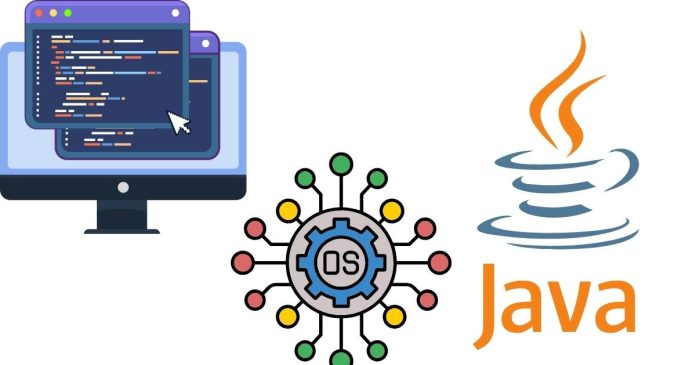In operating systems, an interrupt is a mechanism that temporarily halts the execution of a running program so that the operating system can address a specific event or request. Interrupts play a critical role in modern computing, as they allow systems to respond promptly to hardware or software events, improving efficiency and ensuring multitasking.
This article explores the concept of interrupts, their types, working, and the key role they play in operating system architecture.
Definition of Interrupt
An interrupt is a signal sent to the CPU by hardware or software to indicate that an event requiring immediate attention has occurred. When an interrupt is triggered, the CPU pauses its current task, saves the state of its execution, and switches to a predefined routine called the Interrupt Service Routine (ISR) or Interrupt Handler. After completing the ISR, the CPU resumes its previous task.
For instance, when you press a key on your keyboard, an interrupt informs the operating system to process the keypress event.
How Interrupts Work
The general process of handling an interrupt involves several steps:
- Event Occurs: An event generates an interrupt signal. This could be hardware-based (e.g., a mouse click) or software-based (e.g., a divide-by-zero error).
- Interrupt Request (IRQ): The signal is sent to the CPU through an Interrupt Request line.
- Interrupt Acknowledgment: The CPU acknowledges the interrupt and pauses its current process.
- Execution of ISR: The CPU jumps to the ISR, a predefined routine to handle the specific interrupt.
- Resume Execution: Once the ISR is executed, the CPU restores the previously paused task and resumes its execution.
Types of Interrupts
Interrupts can be broadly categorized into the following types:
1. Hardware Interrupts
These are triggered by external hardware devices to signal events that need immediate attention. Examples include:
- I/O Devices: Keyboard, mouse, or printer signals.
- Timers: System timers generating periodic interrupts.
- Power Management: Low-battery warnings on portable devices.
Subtypes of Hardware Interrupts:
- Maskable Interrupt (IRQ): Can be disabled or “masked” by the CPU when necessary.
- Non-Maskable Interrupt (NMI): Cannot be disabled, as it signals critical events (e.g., hardware failure).
2. Software Interrupts
These are generated by programs or processes when they need to communicate with the operating system. Examples include:
- System Calls: When a program requests a specific OS service (e.g., file operations).
- Exceptions: Triggered by errors like division by zero or invalid memory access.
3. Internal Interrupts
Also called traps, these occur due to conditions arising within the CPU, such as invalid opcode execution or arithmetic overflow.
4. External Interrupts
These are caused by external hardware events, such as user input or peripheral device signals.
Importance of Interrupts in OS
Interrupts are essential for efficient and responsive system performance. Here are some reasons why:
- Multitasking: Interrupts allow the OS to manage multiple processes and switch between them seamlessly.
- I/O Handling: Peripheral devices can signal the CPU only when they need attention, reducing idle wait times.
- Real-Time Response: Interrupts enable systems to respond quickly to critical events, improving user experience.
- Error Handling: Software interrupts help manage runtime errors and ensure program stability.
Interrupt Handling in OS
Operating systems employ several strategies for interrupt handling:
- Interrupt Vector Table (IVT): A data structure that maps interrupt types to their corresponding ISRs. When an interrupt occurs, the CPU consults the IVT to determine the appropriate handler.
- Prioritization: The OS assigns priorities to different interrupts, ensuring that critical events are handled first.
- Context Switching: The CPU saves the current state of the running process before executing the ISR, allowing it to resume seamlessly afterward.
- Nested Interrupts: In some systems, interrupts can occur during the execution of another interrupt, requiring mechanisms to handle such scenarios efficiently.
Advantages of Interrupts
- Efficiency: CPU resources are utilized only when necessary.
- Responsiveness: Allows systems to react instantly to hardware or software events.
- Scalability: Simplifies the integration of new devices into the system.
Disadvantages of Interrupts
- Overhead: Frequent interrupts can slow down system performance.
- Complexity: Requires robust mechanisms for prioritization and conflict resolution.
- Interrupt Storms: An excessive number of interrupts can overwhelm the CPU, causing system instability.
Interrupts are a fundamental concept in operating system design, ensuring responsiveness, multitasking, and efficient resource management. By understanding interrupts and their handling mechanisms, we gain insight into how modern operating systems manage the complexity of user and device interactions. Whether it’s a simple keypress or a critical hardware failure, interrupts ensure that systems remain responsive and reliable.


